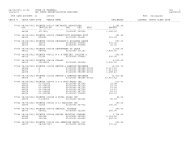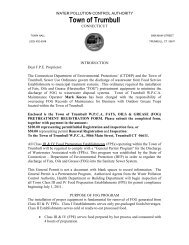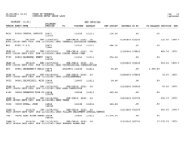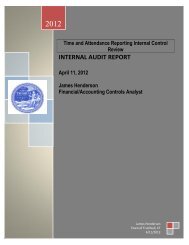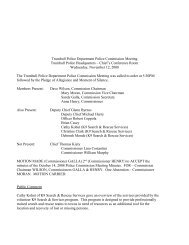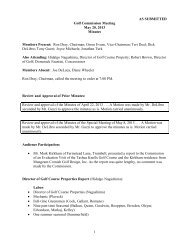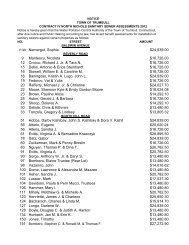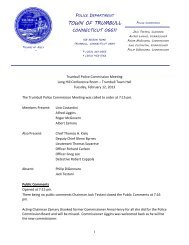Forensic Audit Report-WPCA Phase IV, Part B. Contract ... - Trumbull
Forensic Audit Report-WPCA Phase IV, Part B. Contract ... - Trumbull
Forensic Audit Report-WPCA Phase IV, Part B. Contract ... - Trumbull
Create successful ePaper yourself
Turn your PDF publications into a flip-book with our unique Google optimized e-Paper software.
<strong>Forensic</strong> Consulting Services <strong>Report</strong><br />
Town of <strong>Trumbull</strong>, Connecticut<br />
Page 2<br />
It was also decided that <strong>Trumbull</strong> would discharge their sewage to Bridgeport because <strong>Trumbull</strong><br />
does not have a sewage treatment plant. Bridgeport had an extensive sewage system with available<br />
capacity to accept sewage from <strong>Trumbull</strong>. This “regional” hook-up between <strong>Trumbull</strong> and<br />
Bridgeport was thought to be advantageous to both communities. <strong>Trumbull</strong>’s first sewer construction<br />
was completed in 1973 and provided sanitary sewer service to neighborhoods in the Main Street,<br />
Church Hill Road/White Plains Road sections with extensions that enabled sewers to service all of<br />
the commercial and industrial zones.<br />
Topography is a prime consideration with the system’s design. It is to the advantage of the Town to<br />
have gravity flow within the system wherever possible. Gravity flow is much less costly and<br />
troublesome. However, complete gravity flow is not possible or economically feasible. For this<br />
reason 12 pump stations are used in Town.<br />
The name of the Sewer Commission was officially changed to the Water Pollution Control Authority<br />
(<strong>WPCA</strong>). The Authority is self-funded and employs an Assistant <strong>WPCA</strong> Administrator and<br />
maintenance personnel.<br />
In 1992, the town set out to develop a long term plan for the design and construction of sanitary<br />
sewers in the un-sewered sections of the Town. Public Information sessions were held to discuss the<br />
issues concerning the cost to design sanitary sewers for the balance of the town. The design cost<br />
was approximated at nearly $2 million. The construction costs were estimated to be approximately<br />
$40 million. In developing this plan, the following factors were considered at that time:<br />
• Cost of construction<br />
• Cost of bonding<br />
• Cost of the engineering work<br />
• Demographics<br />
• Environmental quality<br />
• Cost of septic repair<br />
• Availability of Bridgeport’s treatment plant<br />
• Ability of the taxpayers to pay<br />
• Federal grants<br />
• Alternatives<br />
The Town of <strong>Trumbull</strong>’s Board of Finance and Town Council approved bond appropriations in the<br />
1990’s, funding the design of sanitary sewers expansion in five contract areas. More detail on this to<br />
follow in this report. This sewer expansion project has been labeled <strong>Phase</strong> <strong>IV</strong>-<strong>Part</strong> B. It was<br />
considered a near certainty that sanitary sewers would be installed in all five areas, as public<br />
investment and demand was high.<br />
The Town of <strong>Trumbull</strong>’s Water Pollution Control Authority approved an agenda with each project<br />
scheduled for construction in a specific order. <strong>Contract</strong> 1, also known as the “Canoe Brook Lake<br />
Project,” was completed in 2005 and provided sewer service for 375 residents. Construction of



